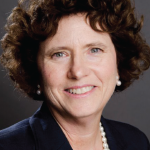
Last month I mentioned I would be addressing the ACR efforts concerning healthcare with this column, but given the timing of our Advocates for Arthritis fly-in—we should be in Washington, D.C. as you read this—I felt healthcare would be better addressed after our time on The Hill (although I encourage you to read Dr. Pisetsky’s healthcare-focused editorial on p. 6). Instead, this month I’m partnering with the ARHP president to discuss the ACR/ARHP organizational approach using the multidisciplinary team model that many of you are no doubt familiar with.
Through both of our day jobs, we know that a multidisciplinary team is imperative for the successful treatment of patients with rheumatic disease. The ACR/ARHP believes the same approach is imperative for a professional society to successfully represent the rheumatology community. If you’ve been a member for any length of time, you know that our membership comprises rheumatologists, scientists, nurse practitioners (NPs), physician assistants (PAs), nurses, physical and occupational therapists, pharmacists, and many other disciplines. As a specialty medical society, the ACR is arguably a leader when it comes to welcoming other health professionals to be members through its ARHP division. By being inclusive, the ACR has created a unique rheumatology environment where physicians and health professionals can interact, collaborate, create, and share.
Over the last several years, there has been tremendous growth of the ARHP and now it has a membership of 1,215. The recognition of a potential shortage of rheumatologists has driven the demand for NPs or PAs to provide rheumatologic care. These providers now make up an increasing percentage of ARHP membership and have played a significant role in modifying the ACR’s approach to education, advocacy, and clinical practice.
Successful Collaboration Benefits the Membership
The ACR has a number of committees that work closely with staff to conduct the organization’s work, and every one includes at least one health professional. Whether the volunteer group works on one of our standing committees, task forces, or sections, the inclusion of one or more health professionals ensures that crucial expertise is represented. Examples of successful collaboration include the recent expansion of Arthritis Care & Research from six to 12 issues under the leadership of the Committee on Journal Publications; the launch of the Rheumatology Image Bank incorporating health professional images not included in past collections; and the merger of all advocacy initiatives under one Government Affairs Committee.


